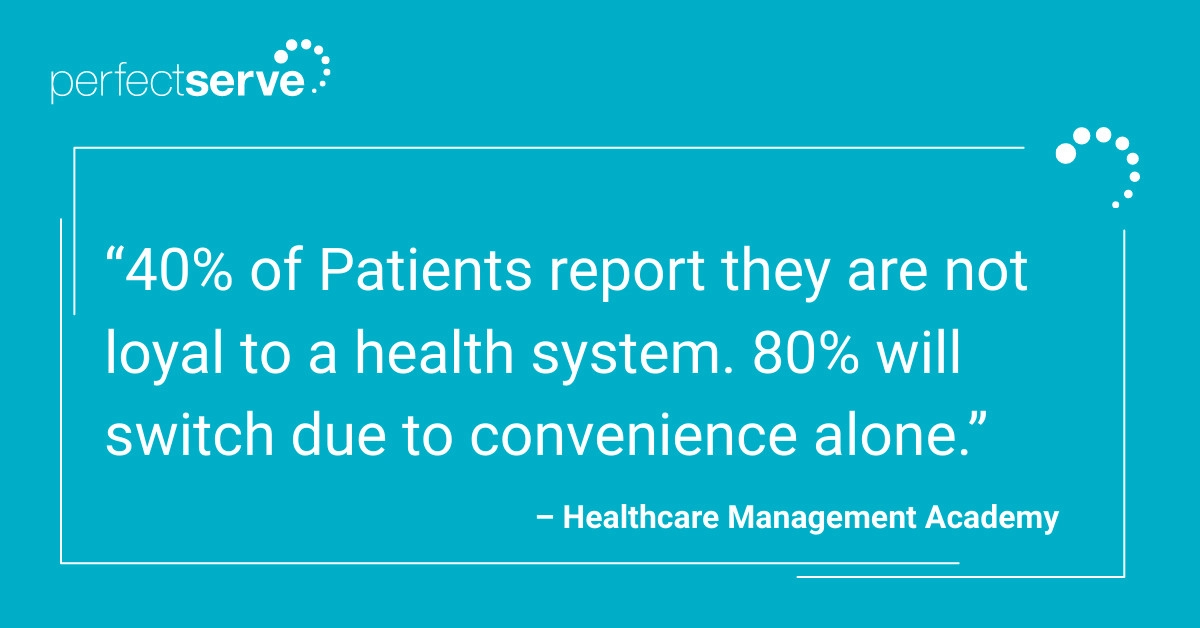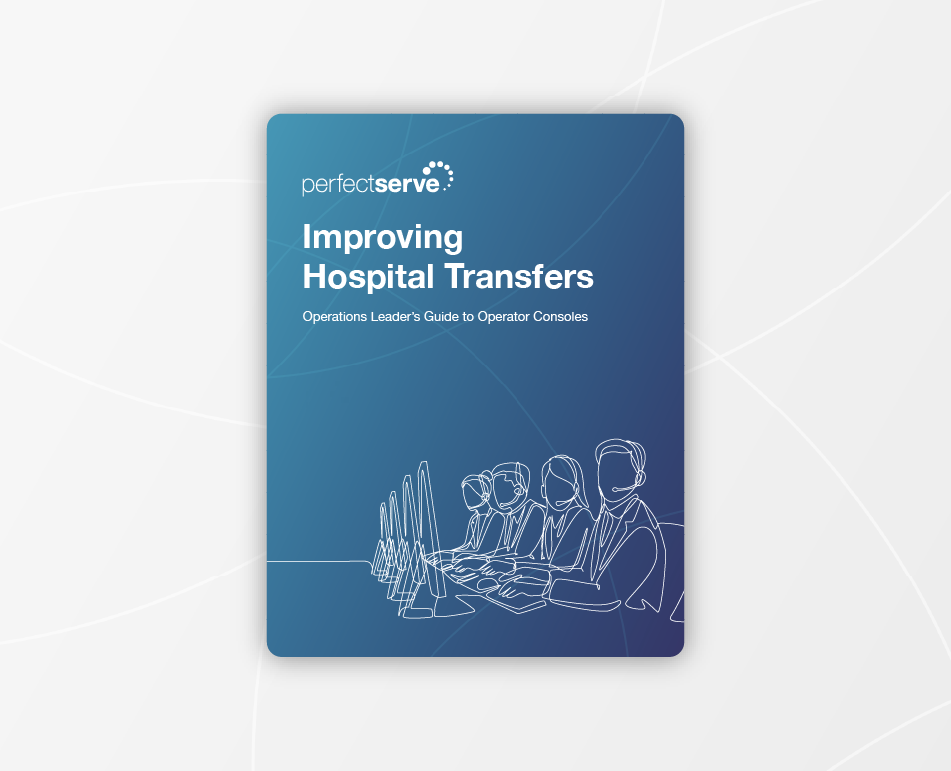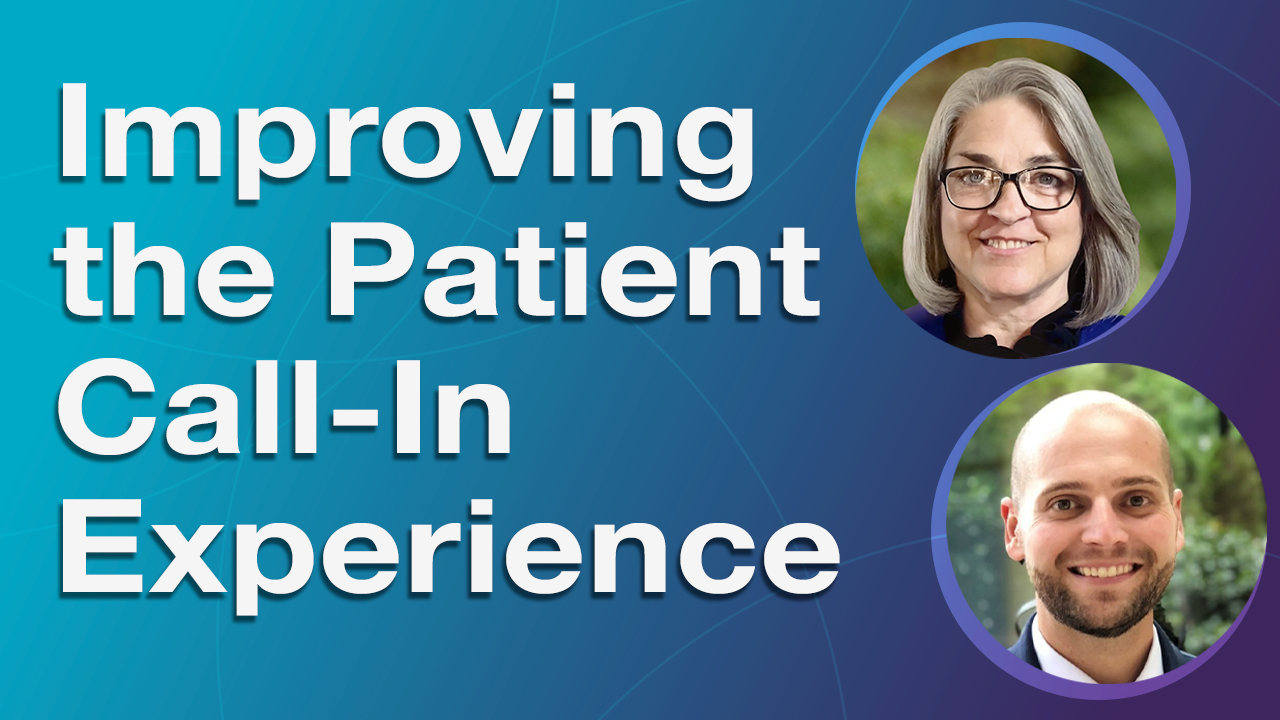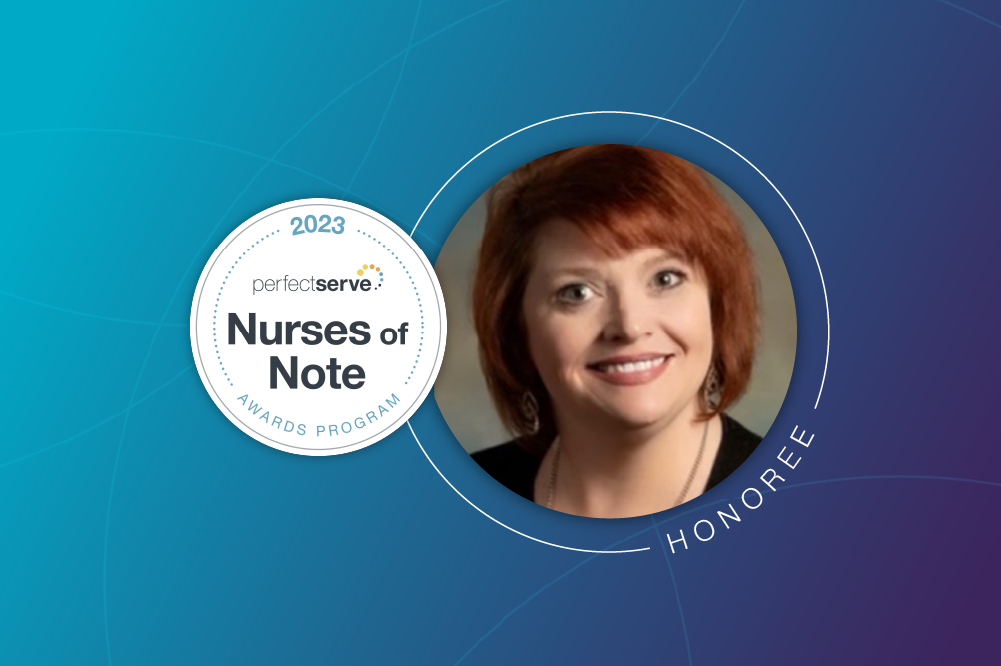Healthcare Trends in 2022: Top 6 Needs to Consider for Medical Groups
TABLE OF CONTENTS
The pandemic has accelerated some of the healthcare trends that were on the rise before 2020. In our interview with Dr. Rodrigo Martínez, practicing otolaryngologist and Chief Medical Officer with PerfectServe, and Matt Kothe, Manager of Corporate Communications, they unpack the six factors healthcare organizations need to understand for their staff and patients.
Digital Transformation Management
Digital tools allow individuals to send messages through methods like HIPAA-compliant secure messaging. Whether it’s between clinicians, or to patients and family members, it’s crucial to implement a controlled workflow for this communication. Without digital management in your healthcare system, you run the risk of potentially overwhelming clinicians, which is less than ideal given observed burnout levels across the industry.
When a patient takes time to log into a portal and send a message, not getting a timely response can dissuade them from trying to engage with their healthcare provider in the future. If that patient includes important medical information and nothing is being done, it can have devastating consequences.
Here are a few questions an organization can ask when setting up new technologies:
- Is someone sending a message to someone else?
- If yes, who is it going to, and who is responding?
- Does the current workflow include the appropriate recipient?
Developing basic workflow hygiene will help, especially when the communication involves time-sensitive medical issues.
Adapt to Competitors
With consumer behaviors evolving, the ability to create a better patient experience is key to the success of your organization. Competitors like large retail pharmacies now offer on-site healthcare services, with customized, easy reminders and interfaces for patients. They are leveraging technology to provide all-encompassing healthcare services—a push health systems can no longer ignore.

A few examples:
- CVS Pharmacies now have the ability to schedule appointments and exchange information online, in addition to having a pharmacy on site. CVS offers services for their walk-in patients called the MinuteClinic®, which provides care similar to a primary provider for things like skin conditions, minor illnesses, and wellness check-ups.
- Walgreens started offering similar walk-in services at their Community Clinic in 2017, treating chronic conditions and patients 12 months and older.
- One Medical is also leveraging technology to provide a more all-encompassing healthcare approach and currently offers options in major cities across the U.S.
Interoperability
Sharing critical information with competitors hasn’t been in the best interests of many companies. Instead, the burden of moving or transmitting medical records from one format or location to another often falls to clinicians, nurses, and even the patients themselves.
In non-clinical settings, it’s possible to send an SMS message using multiple tools, but the problem is you cannot typically send messages between these tools. Exchange standards have not been established, and connecting these disparate tools is challenging. Even so, progress has still been made between a few EHR vendors, which use technology that functions as an intermediary.
True interoperability with “one app to rule them all” is not a reality at the moment, but it’s still the “holy grail” of healthcare technology needs. Not enough tools are robust or extensive enough to handle the complexities of modern healthcare. However, solutions are underway to build integrations and other interoperability workflows, such as PerfectServe’s simple one-tap messaging features.
Address Provider Wellness and Burnout
There is no silver bullet for improving clinician wellness by addressing burnout. Pre-pandemic burnout influences are certainly different from the ones experienced post-pandemic. In the initial phase of the pandemic, even with the overwhelming number of sick patients, clinicians and providers rose to the challenge, thinking, “Okay, this is what I’ve trained for all of my life.”
But, the simple truth is that sustaining an emergency state can tire and negatively impact humans in a very profound way. It creates unendurable situations where people are physically and emotionally drained. Adding to the challenge is the fact that a sizable portion of the population in the United States has not been vaccinated, which has created a bit of an “empathy gap” for some medical professionals who desperately need relief but continue to see avoidable COVID hospitalizations. When developing technology, it’s important to be sensitive to current circumstances so you can offset some of the more onerous inputs clinicians deal with every day.
Nursing Shortage
Nursing shortages affect all layers of healthcare. This trend has been on the radar for a while, but the COVID pandemic has exacerbated the problem as some nurses have left the profession entirely for a number of reasons. Further, if you’re a nurse or physician, you’re also a husband, wife, brother, sister, son, or daughter. If your loved ones get sick, you’re not able to serve patients at the same time. When you throw in additional patient surges, it makes the workload of those who remain more challenging, creating a snowball effect.
Empathy in Healthcare Technology
The people on the front lines of the pandemic have always been heroes, but their efforts have truly been herculean over the past few years. If we develop collaboration technology in these circumstances—which PerfectServe certainly does—we have to be proactive and responsive to current needs while using our product innovations to offset and redirect some of the administrative or logistical inputs that add to care team toil. Much of PerfectServe’s technology reduces these kind of burdens for health systems and their staff every day.
Invest in the Patient Experience
In the US, healthcare is not just the individual interactions between a patient and their physician, nurse practitioner, or other caregiver. It takes a team to provide optimal care for an individual patient. Examining how to facilitate and maintain these workflows efficiently needs to be at the forefront of patient care.
Healthcare Technology Solutions for Patients
When designing clinical collaboration solutions, healthcare software providers need to keep the patient experience in mind.
As people grow older and acquire chronic diseases, personalizing care will be important. We have the remote technology to reach patients outside clinic and hospital walls, yet it’s the application and collaboration of these tools that will make a difference in patient outcomes.
As more emphasis is placed on taking care of patients at a distance, the pandemic has forced us to move into the realm of what you might call “healthcare 2.0.” Some of these advances are long overdue, while others are just in the beginning stages.
The intelligent application of analytics and AI could help siphon through data to emphasize important things so the right people can take timely action, or automate the correct action. Using technology this way should ultimately lead to improved and more personalized care for all patients.
Asynchronous Healthcare Delivery
What comes to mind when you think of an ideal experience with a provider?
Whether it’s seeing your physician, having an interaction with a nurse in the hospital, or a visiting with a team of chronic disease care nurses, these consultations can happen face-to-face, by phone, or over a video call.
With technology, you can start collecting most of the information for better care ahead of time without having to wait for a live interaction, minimizing the need to fill paper forms on-site.
How does this help healthcare professionals and their patients?
Asynchronous Healthcare Delivery Outcomes
Asynchronous technology offers a new convenience for individuals who are comfortable revealing their information to the healthcare provider, feeling confident everything has been packaged correctly in written form. Many adults don’t seek in-person care because it can be inconvenient, taking hours to plan and get to a clinic. This technology creates more convenient methods for patients to seek quality care.
It allows access to healthcare for individuals whose schedule may not align with the provider at the moment of the live visit. This helps care team members in the prioritization process. Digital, asynchronous technology can allow one person to interact with many people, improving care outcomes for all of them.
Safe and Transparent Healthcare Communication
Technology helps medical providers gather a lot of patient information ahead of time, and it allows everything to be collected and then placed in a queue so a human can review it. A digital intake form is just one example, and sometimes patients are more comfortable writing down a message about their health condition versus talking about it during a face-to-face interaction. Sometimes patients prefer a phone call and don’t want to be seen on Zoom, or they’re perfectly happy writing out information for the physician to get back to them.




